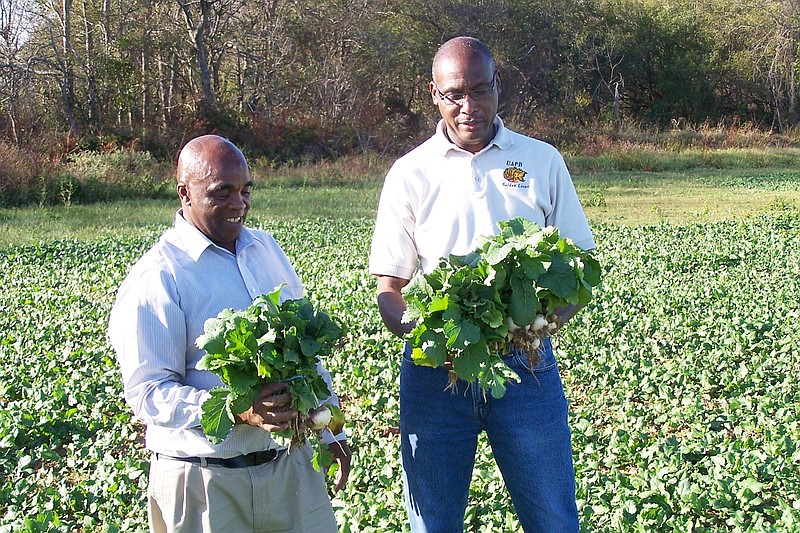Producers can still plant fall greens in southeast Arkansas, including turnip, mustard and collard greens, said Henry English, director of the Small Farm Program at the University of Arkansas at Pine Bluff.
Greens are a versatile crop popular among Arkansas farmers that can be grown on almost any type of soil.
"As a rule of thumb, fall greens should always be planted 8-10 weeks before the first expected fall freeze," he said. "In southeast Arkansas, the first expected fall freeze will occur Nov. 7."
When choosing which greens to plant, individuals should select varieties that will mature before the Nov. 7 freeze date, English said. Some of the common greens varieties are Florida Broadleaf (mustard), Purple Top White Globe (turnip) and Vates (collard).
"Greens can be grown on almost any well-drained soil," he said. "Farmers occasionally grow greens in raised beds to help with drainage. The best soils for greens, however, are sandy loam or silt loam soils because they allow for good internal drainage."
Ideally, producers should use a soil test to determine the fertilizer recommendations for the greens. For more information on soil testing or for help interpreting soil sample results, individuals should contact their local county extension agent. Those who do not obtain a soil test can apply a complete fertilizer (13-13-13) at planting, followed by a nitrogen fertilizer (44-0-0) two to four weeks later.
Before planting, English also recommends producers be aware of the following:
• Whether hard pan or plow pan has developed in the soil. This hard, cement-like layer of soil will affect root growth and the plant's ability to obtain water and nutrients.
• The field's herbicide history. Producers should consider what types of herbicides were applied in their fields and when they were applied. If soil-applied residual herbicides are still present and have not had enough time to dissipate, the current crop of greens could be negatively affected. When weather conditions are hot and dry, the soil residual herbicide may not be broken down, thus slowing or preventing the new crop's growth.
• The field's weed history. Was there an abundance of weeds in the previous crop or was the crop very clean with no weeds? If there was an abundance of weeds, producers should plan to use a good weed control plan. Without a weed control plan in place, crop yields could be significantly reduced. When it comes to weed control, it is better to be proactive instead of reactive.
English said turnip and mustard greens are direct-seeded. Both varieties should be seeded at a rate of 1-2 pounds per acre with a precision seeder. With a conventional seeder, the rate is 2-3 pounds per acre for turnip greens and 3-4 pounds per acre for mustard greens. Collard greens can be direct seeded or transplanted. Most commonly, they are transplanted to shorten the harvest date.
"When seeding, producers should strongly consider using precision seeders because of the small seed size, shallow planting depth and in-row spacing," English said. "However, a number of different types of seeders will do an adequate job."
Irrigation may be needed to get the seeds to germinate and to maintain the growth of the greens, he said. In many cases, farmers must wait for a rain before planting, thus shortening the time they will have greens available for sale.
Troublesome insects including leaf miners, cabbage worms and aphids can pose a challenge when growing greens as they feed on the sap within the plant leaves and stems. For pesticide recommendations, English said producers should refer to the University of Arkansas Division of Agriculture's Insecticide Recommendations for Arkansas publication (MP144).
To harvest fall greens, producers can cut the plants to around 1 inch above the soil's surface, allowing them to quickly put on growth for another harvest. Alternatively, they can pull up the entire plants. Leaves are then bundled into 1-pound batches or larger.
"If pests are controlled and the crop receives the proper nutrition, yields of 400 boxes can be expected, with each box containing 24 1-pound bundles of greens," English said. "Net returns can be around $2,000 per acre."
Will Hehemann is a writer/editor at the UAPB School of Agriculture, Fisheries and Human Sciences.
